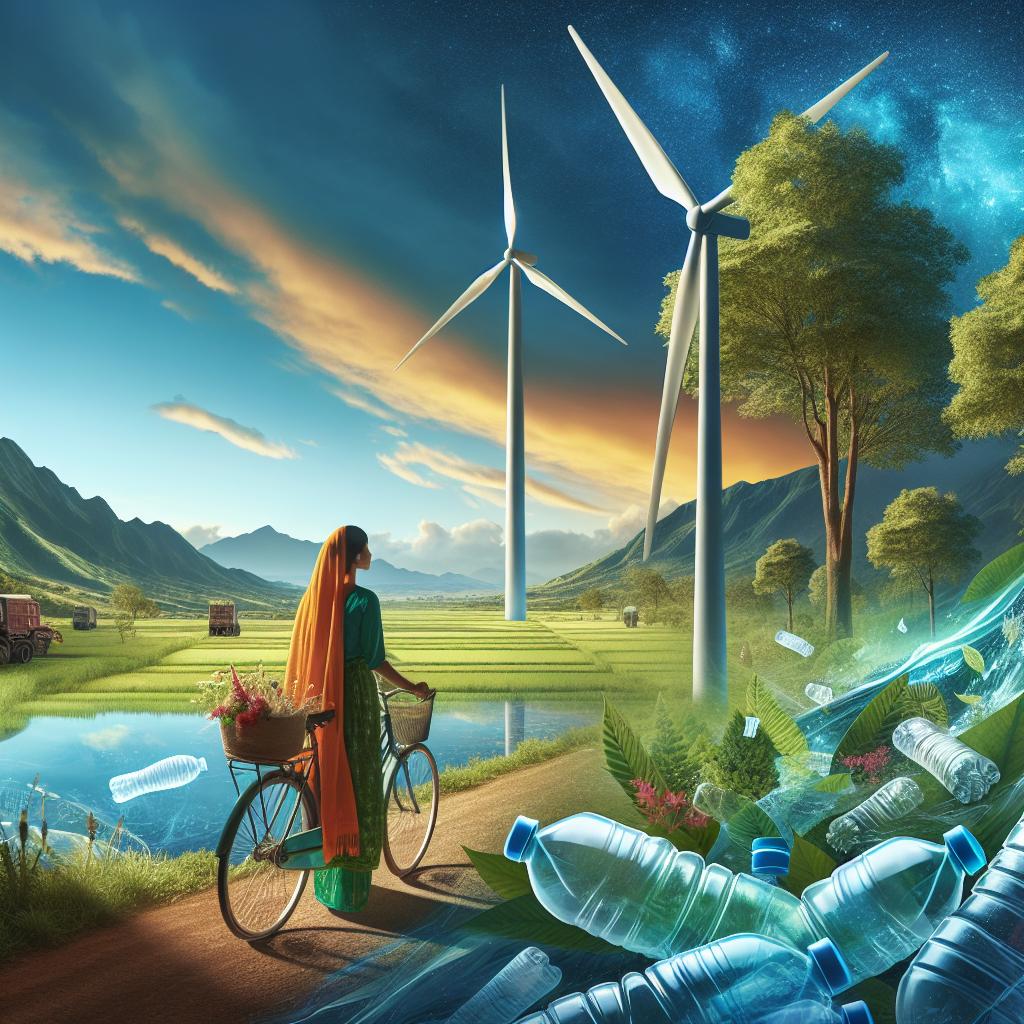Embracing a Greener Future

As the world grapples with the increasingly apparent effects of climate change, more and more people are recognizing the need for sustainable living practices. This shift towards a greener future encompasses various aspects of daily life, from the energy we consume to the way we travel, dress, and even build our homes.
First, renewable energy sources, such as solar, wind, and hydroelectric power, are becoming increasingly popular. According to the International Energy Agency, renewable energy accounted for over 30% of global power capacity additions in 2020, a significant increase from the previous year. By adopting renewable energy, individuals can reduce their carbon footprint and contribute to the global effort to combat climate change.
Moreover, sustainable living extends beyond energy consumption. Eco-friendly travel, for instance, is gaining traction as a way to minimize the carbon emissions generated by tourism. This can include taking public transportation, opting for local accommodations, and embracing slow travel – allowing for a deeper, more immersive experience of a destination.
Another pressing issue that requires attention is plastic pollution. According to the United Nations, nearly 300 million tons of plastic are produced each year, and half of that is for single-use purposes. By adopting a zero-waste lifestyle, individuals can significantly reduce their plastic usage. This can involve using reusable bags, water bottles, and containers, as well as choosing products with minimal packaging.
Fashion, too, is undergoing a transformation towards sustainability. The fashion industry is one of the largest polluters in the world, contributing to greenhouse gas emissions and water pollution. Sustainable fashion, on the other hand, focuses on using eco-friendly materials, ethical labor practices, and minimizing waste.
Biodiversity conservation is yet another crucial aspect of sustainable living. According to the World Wildlife Fund, we are currently experiencing the sixth mass extinction event, with wildlife populations having declined by an average of 68% since 1970. By supporting organizations and initiatives that focus on preserving natural habitats and reducing human impact on the environment, individuals can contribute to the protection of biodiversity.
Organic farming is another essential component of sustainable living. By choosing to support organic farms and farmers, individuals can help reduce the use of harmful pesticides and support local agriculture. Moreover, organic farming practices are better for the environment, as they focus on maintaining soil health, reducing water usage, and promoting biodiversity.
Lastly, sustainable architecture is gaining attention as a way to minimize the environmental impact of buildings. This can include using energy-efficient materials, incorporating natural light and ventilation, and designing buildings that blend with their surroundings. By investing in sustainable architecture, individuals can reduce their carbon footprint and contribute to a greener future.
In conclusion, sustainable living encompasses a wide range of practices aimed at reducing our carbon footprint, minimizing waste, and preserving the natural world. From renewable energy and eco-friendly travel to sustainable fashion, biodiversity conservation, zero-waste lifestyles, organic farming, and sustainable architecture, the choices individuals make every day can have a significant impact on the environment and the future of our planet. It is up to each of us to embrace these practices and work towards a greener, more sustainable future.




